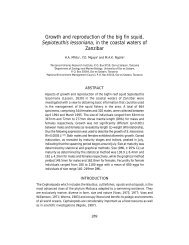gpa_east_africa_case.. - GRID Africa GeoPortal - UNEP
gpa_east_africa_case.. - GRID Africa GeoPortal - UNEP
gpa_east_africa_case.. - GRID Africa GeoPortal - UNEP
You also want an ePaper? Increase the reach of your titles
YUMPU automatically turns print PDFs into web optimized ePapers that Google loves.
Summary of the main characteristics and results of the Case StudiesCharacteristicsBeau Vallon MombasaDar-es-Salaam(Seychelles)Nature of Study Area Bay area and main Major coastal urban Capital city and majortourism location in centrecoastal urban centreMaheSize of Study Area 1,100 ha 282 sq. km 1,350 sq. km.Population (1999) 7,000 650,000 3,500,000Estimated per capita $7,000 $750 $650IncomeMain income source Tourism and fisheries Informal sector jobs Informal sector jobsand tourismand tourismState of the environment Threats of imminent Serious pollution Serious pollutionpollution impacts impactsimpactsMain resource affected Rivers, the bay area Settlements, rivers and Settlements, riversand coastal/marine coastal/marine and coastal/marineenvironment environmentenvironmentMain socio-economic Mainly threat to Mainly health, also Mainly health, alsoconsequencetourism industry tourism, property tourism, propertyvalues and coastal values and coastalenvironmentenvironmentMain pollution control Sewerage System Sewerage System Sewerage SystemresponseAssociated strategic Sustainable coastal Sustainable coastal Sustainable coastalenvironmental objective management managementmanagementEstimated Project $15.0 $100 $222Investment CostEstimated partial annual $21 million (2004) $48 million $65 millioncost of pollution (excludingqualitative impacts)Net Present Value $202 million $291 million $565 millionQualitative benefits not Indirect recreation Indirect recreation, Indirect recreation,quantifiedand non–use mangroves and nonusemangroves and non-biodiversity valuebiodiversity value use biodiversityvaluePresent Value of $228 million $681 million $1,479 millionBenefitsNet Present Value $202 million 506 million $543 millionQualitative benefits not Indirect recreation Indirect recreation, Indirect recreation,quantifiedand non–use mangroves and mangroves andbiodiversity value non-usebiodiversity valuenon-use biodiversityvalueCBA is essentially a matter of depth, the more detailed the data the deeper and moreaccurate the results The quantitative results of the Case Studies are, as expected, sensitiveto the quality of the available data, particularly those concerning the most important benefits,such as tourism and health. Some general comments include the following:More detailed data on tourism trends would on the one hand improve the accuracy of theestimates but would require a longer study time. To strike a balance, the Case Studies utilisescenarios to work out optimistic and most-likely projections on future trends. Tourism“productivity” reduction of 5 – 10% are adopted as reasonable indicators. It is necessary to dofurther research to calibrate these indicators to suit specific city conditions.Health statistics provide a general view of the severity of health conditions. Poor healthconditions and the incidence of diseases are attributed to polluted water from municipalsewage. It is not possible with the available data to establish a direct link between changes inwater quality and changes in health conditions (dose-response function) to allow conclusionsabout how many life-years would be saved by increased population access to sewerageinfrastructure through additional investment. The Case Studies focus on the human capitalapproach to valuation estimating the treatment cost and income loss from poor health anddeath based on crude numbers of mortality and morbidity.Final Draft Report – Cost Benefit Case StudiesGPA Strategic Action Plan on Sewage, October, 200057



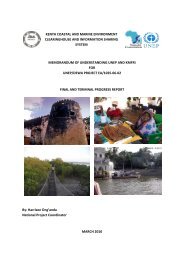
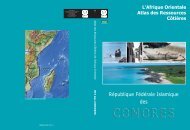
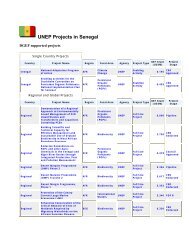

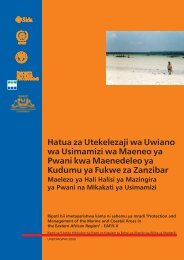
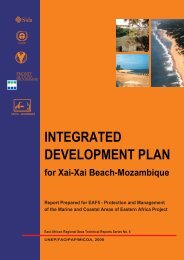
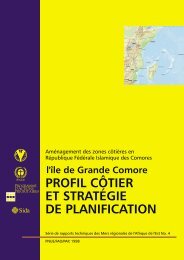
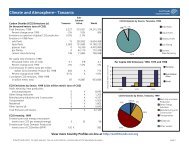

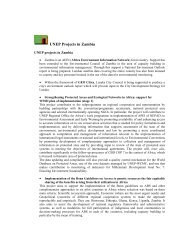
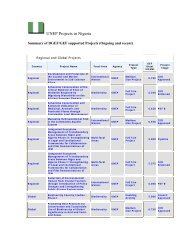
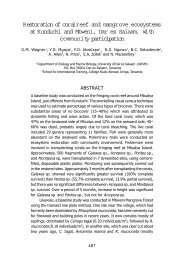
![Please Click to download [English] - GRID Africa GeoPortal - UNEP](https://img.yumpu.com/30633391/1/184x260/please-click-to-download-english-grid-africa-geoportal-unep.jpg?quality=85)
